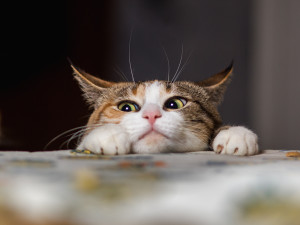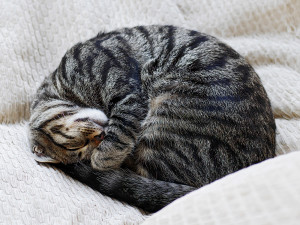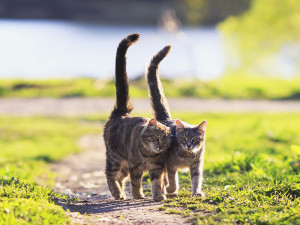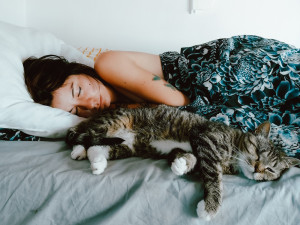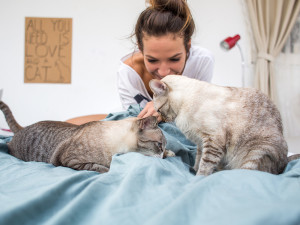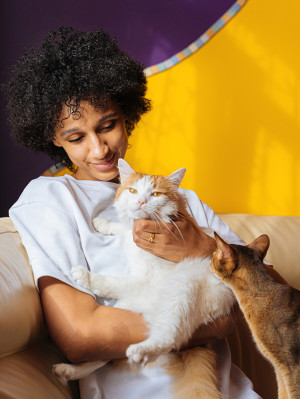Has Your Cat Been Crying? Or Just Chopping Onions Again
Their eyes might be watering but are our cats crying? And what can we do about it?
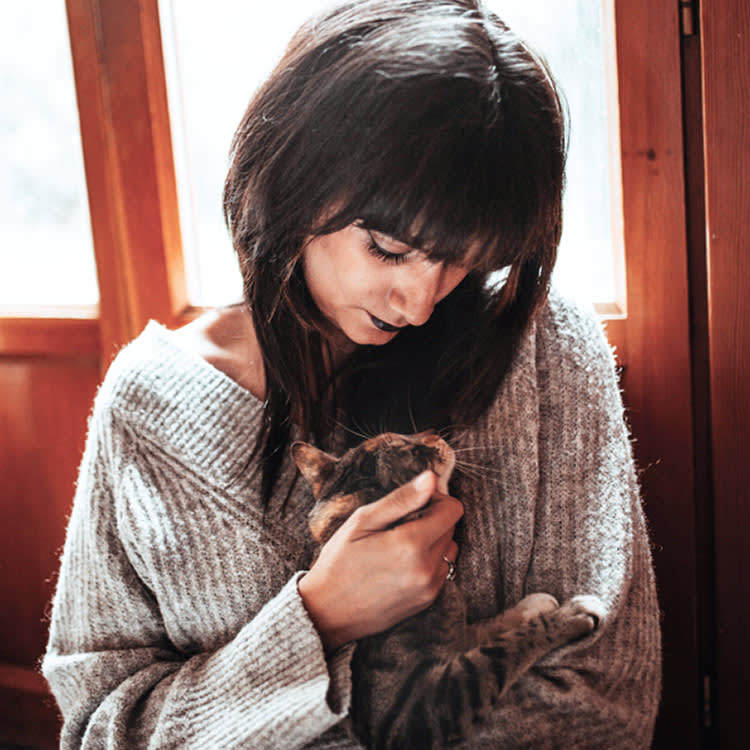
share article
What do we normally do when we are feeling sad, upset or have big feelings? We cry. And it is perfectly reasonable to wonder if our feline friends do the same. Despite all our best efforts as a pet parent, that our cats seem sadopens in a new tab or a bit off and there can be tears in their eyesopens in a new tab, sometimes enough to drip down their cheeks. So what’s going on, are our cats crying? And what can we do about it?
Can cats cry?
Put The Notebook away. Cats don’t actually cry from emotions like we do. Sometimes it may seem like they’re crying if their eyes are overflowing (especially if they’re making a sad expressionopens in a new tab, along with changes in behaviour) but it is rather an excess and overflow of tears known as epiphora. And it’s a good thing that you spotted these ’tears’, as they can have a variety of causes. It’s worth remembering, too, that cats have evolved as prey animals as well as hunters, so they will often hide signs of not feeling well and signs of pain to not look weak to potential predators, so any indication of something being wrong is important to note.
Some discharge is normal from cats’ eyes, clear fluid or crusty ‘sleep’ that turns darker to almost black in colour as it dries. However, if there is more discharge than usual or any of a different colour or consistency, it is time to make an appointment with your vet.
What does it mean if my cat’s eyes are watering?
Tears are necessary for more than just showing emotions in humans, and cats and dogs have them for all those other reasons, too. Tears are for lubrication of the eyes, washing away irritants and delivering important nutrients to the surface of the eye itself. When it appears that our cats are crying, what is happening is either an excess of tear production or a reduction in removal on their part, or both.
Reasons for epiphora (excess tears)
There are lots of reasons for your cat’s eyes to be overflowing with tears. These include:
Irritated eyes from allergies, dust or a foreign body. Abnormalities such as eyelashes growing where they shouldn’t or eyelids rolling inwards can cause eyelashes to rub against the eye.
Conjunctivitis from both bacterial and viral infections.
Corneal ulcer or a scratch on the surface of the eye, which causes pain and can become infected.
Painful conditions of the eye such as glaucoma.
Reasons for tears not cleared away
Blocked nasolacrimal duct: this duct in the inner corner of the eye helps drain excess tears down through the nose and can become restricted through age or illness. Some breeds such as the Persian and Himalayan get this commonly.
Reduced grooming: for cats this is a big deal. They are fastidiously clean creatures and not wanting or being able to clean themselves can mean they’re not feeling well.
How to fix your cat’s watering eyes
One of the things you can do when you notice your cat has more watery or crusty eyes than normal is to help them clean it away. If your cat allows, carefully and gently wipe their eyes with a clean damp cloth, and usually this is all that’s needed to help them. However, if they keep watering more than normal, the eyes look red or are not opening normally, or if the discharge is an abnormal colour then the best thing is to make an appointment with your vet to get them checked out.
Once at your appointment, the vet will be able to examine their eyes more closely to check for ulcers or infection. They may look into and at the back of the eye with an ophthalmoscope, and check for corneal ulcers with a special dye called fluorescein, which highlights damaged areas. If there is an infection or an injury present, drops or pain relief may be needed.
How do I know if my cat is sad or in pain?
While they do not cry with tears like us humans, there are signs that cats use to express their emotions. Anyone who’s had the pleasure of having a cat will say they can tell you a lot with just a look! Here are some signs they may be sad or in pain:
Changes in behaviour
Hiding away when usually confident, or being more needy than usual can sometimes tell you something is not right.
Body language
Tense and crouching protectively may be a sign of discomfort or fear.
Change in gait
Limping is a clear indication of pain but sometimes all they show is a shorter stride or stiffness, which is hard to spot.
Facial expressions
When sad cats can have a worried expression and hold their ears low, when scared or in pain they may look tense in the face and hold their whiskers tight to their cheeks and ears flat back.
Vocalisation
Cats can make an extraordinary variety of noises, and can cry out or growl if in pain or worried. Cats mainly meow to communicate with humans rather than other cats so try to decipher your cat’s unique dialect.
Purring
While purring is known as the happy noise it can also be used to self soothe, so take note if they are purring but otherwise seem different.
Watch that tail
All cats are different in their communication methods but if they hold their tail down against their back legs, or very still apart from flicking the tip, it can mean something is upsetting them.
All these signs can be very tricky to spot, but you know your cat better than anyone else so if you have any concerns do get in touch with your vet.
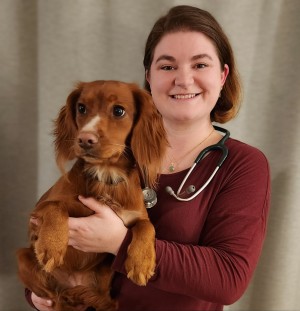
Dr Josephine Corrick, BVMSci, BSc, MRCVS
Dr Josephine Corrick, BVMSci, BSc, MRCVS is a veterinary surgeon based in the south of Scotland where she has been since graduating from the University of Surrey. She enjoys working in general practice treating small animals. Her particular interests include diagnostic imaging and the treatment of wildlife.
Having found a passion for veterinary medicine after doing a degree in Equine Sports Science she still enjoys including horses in her life by spending time with her highland ponies. Alongside her clinical work, she helps run a smallholding caring for rare breed sheep and exploring the Scottish countryside with her young Cocker Spaniel.
Related articles
![Curled up tabby cat sleeping on pillows]() opens in a new tab
opens in a new tabHow Many Cat Naps Is Too Many?
A very sleepy kitty isn’t usually a problem, but watch out for these signs of medical distress
![Young woman hugging her cat]() opens in a new tab
opens in a new tabWhy Do Cats Purr?
Surprise: it doesn’t always mean they’re happy
![Two cats walking with their tails sticking straight up]() opens in a new tab
opens in a new tabTail Talk: What Is Your Cat Trying to Tell You?
Cats are enigmas. But their tail movements can reveal a lot about their moods
![woman with dark hair lying in bed with striped cat, both asleep]() opens in a new tab
opens in a new tabShould Your Cat Sleep With You?
Here are the pros and cons of having a feline sleeping buddy
- opens in a new tab
Do Cats Get Jealous?
Is there a green-eyed monster hiding in that adorable ball of fluff?
![A woman with curly black hair sitting in front of a dark purple and yellow backdrop while looking down affectionately at her two cats sitting on her lap]() opens in a new tab
opens in a new tab7 Ways to Build Your Cat’s Trust In You
If your cat still approaches you with a figurative arched eyebrow of scepticism, try these tricks to put them at ease
